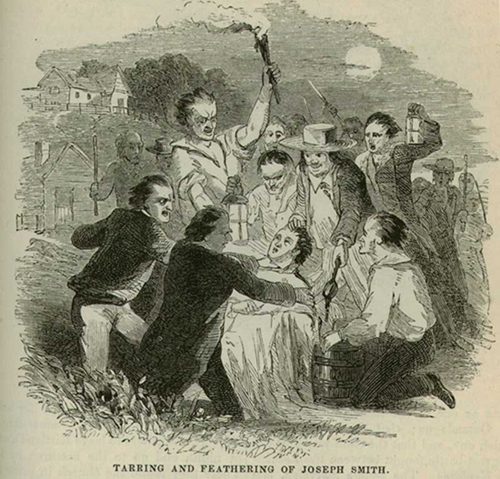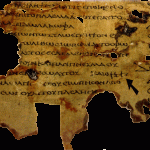
Some claim to believe that Joseph saw such episodes as a way of avoiding work and advancing himself socially.
(Wikimedia Commons public domain image)
Another passage from one of my rough-cut manuscripts:
We’ll first look at various explanations holding that, yes, there was an objective reality [to the plates, etc.], but it was an artifact of fraud. This is perhaps the most common explanation advanced by skeptics. As one recent book from a prestigious academic publisher remarks in passing, with regard to the Book of Mormon, “Exactly how this work was composed remains a matter of debate, but most non-Mormons would dismiss it as outright forgery.”[1] But can such dismissal withstand serious scrutiny?
Individual Deceit (practiced by Joseph Smith, unaided). It seems difficult to credit this as a believable explanation for the Book of Mormon. We have seen evidence of Joseph Smith’s sincerity and good character, which makes it difficult to imagine that he would be party to such deceit. Of course, there is one theory that Joseph was a “pious fraud,” lying for Jesus, concocting a tale with which to resist the-then popular heresy of Deism. Whether even such a notion is compatible with the many testimonies of his honesty and character is dubious, in my view. But entirely aside from the perhaps ultimately unresolvable question of his innermost character, Joseph Smith seems positively incapable of having pulled off such an enterprise on his own, unaided. He was, as those who best knew him readily and repeatedly noted, only marginally literate during the period of the production of the Book of Mormon. Certainly he seems an unlikely candidate to have produced a book manifesting all the apparently authentic ancient and Near Eastern characteristics that, as we have seen, the book quite arguably possesses. There is even, as we have seen, quite persuasive evidence that he was unfamiliar with the text as he translated it, and that he struggled with its proper names and some of its vocabulary. Furthermore, could he have written something so sophisticated and complex in so short a time? Could he have fabricated gold plates? Where did he derive the metallurgical expertise? Where did he get the gold? [At the time of writing, gold is selling for just over US $275.00 per ounce. If William Smith’s estimate of their weight at 60 pounds was accurate, and if they were of pure gold, their monetary value in today’s terms was something on the order of US $264,000. More likely, they were a gold alloy, but, clearly, their value was far beyond the reach of the young son of a subsistence farmer.] Where did the gold go when he was done with it? Did he just give it away? Bury it? How was he able to produce the breastplate and other artifacts that many saw? Was he really up on the Hill Cumorah cementing a box and hiding it in the earth? Why did nobody notice any of this elaborate activity? Finally, it is very difficult to see how he convinced many of his associates to believe that they were seeing angels, experiencing miracles, hearing the voice of God, and witnessing examples of otherwise impossible prophetic foreknowledge. For lack of a better word, such “supernatural” aspects of the story are exceptionally difficult to account for on a hypothesis of simple fraud.
[1] Philip Jenkins, Hidden Gospels: How the Search for Jesus Lost Its Way (New York: Oxford University Press, 2001), 46.












